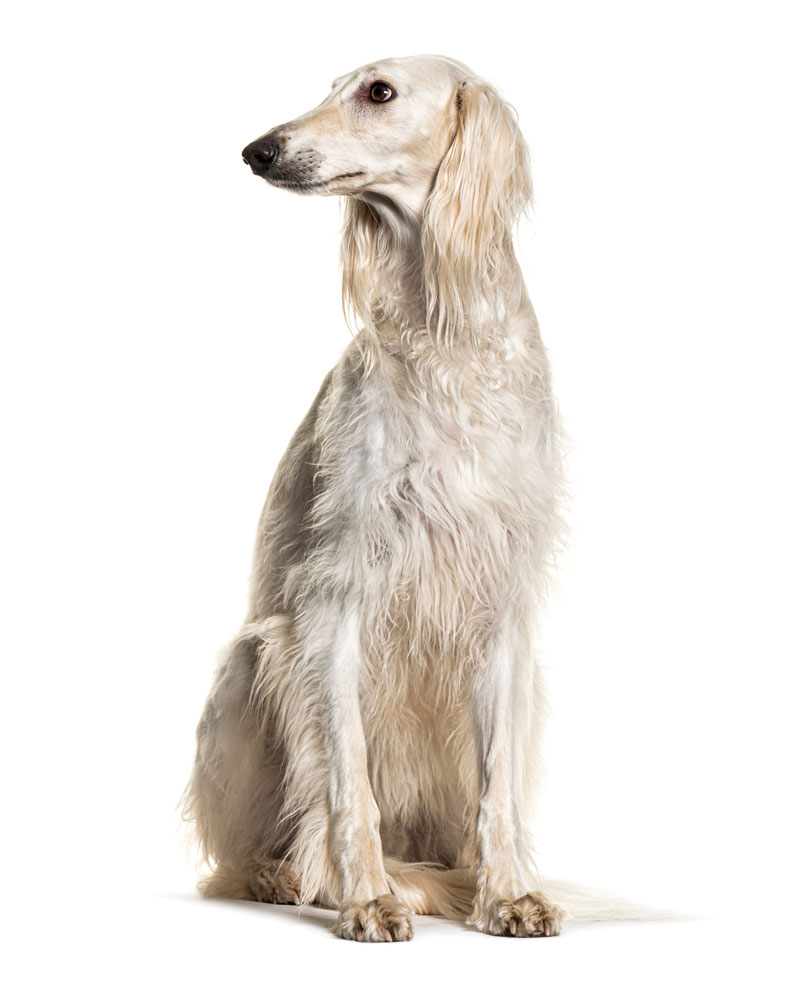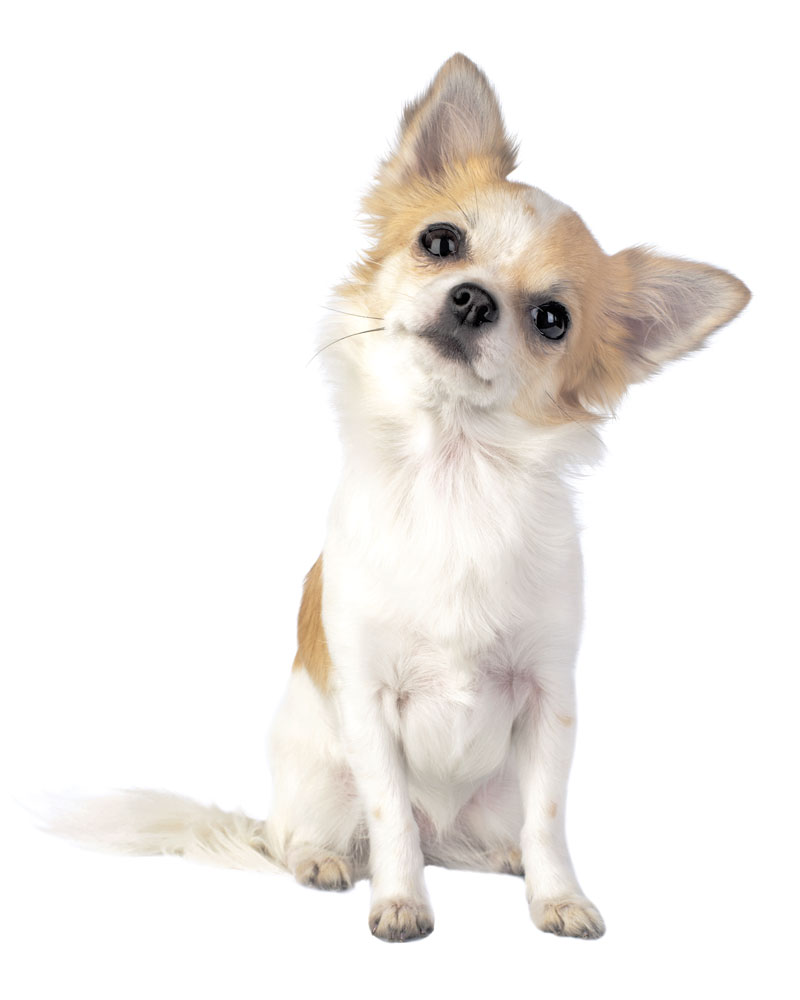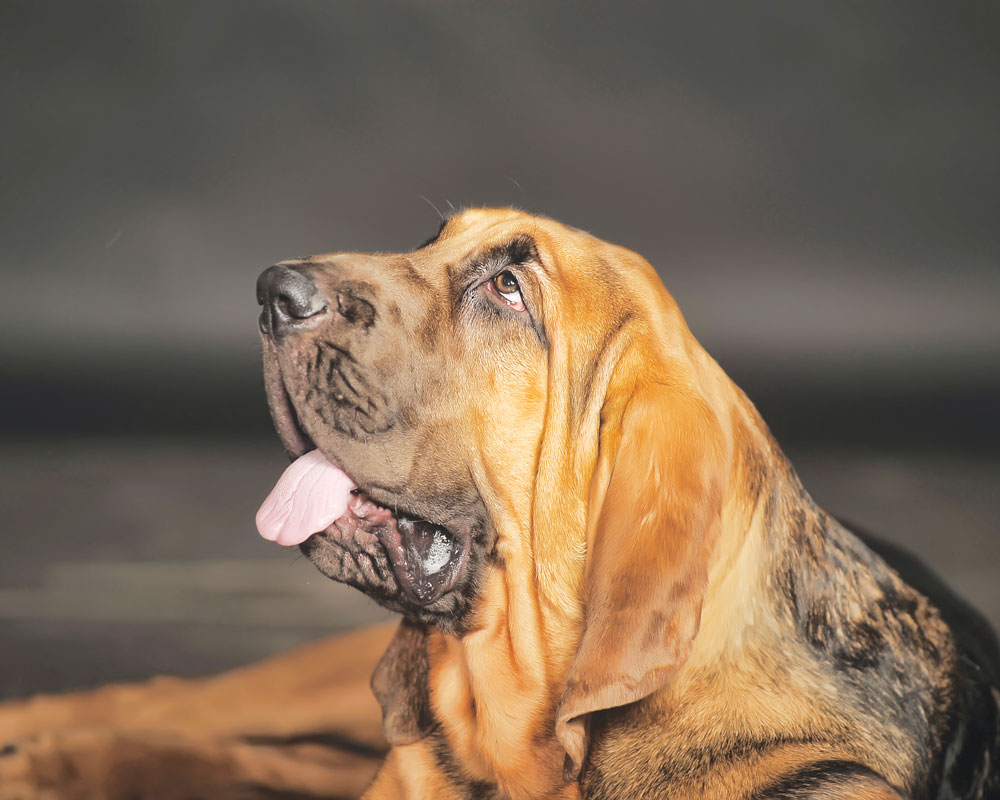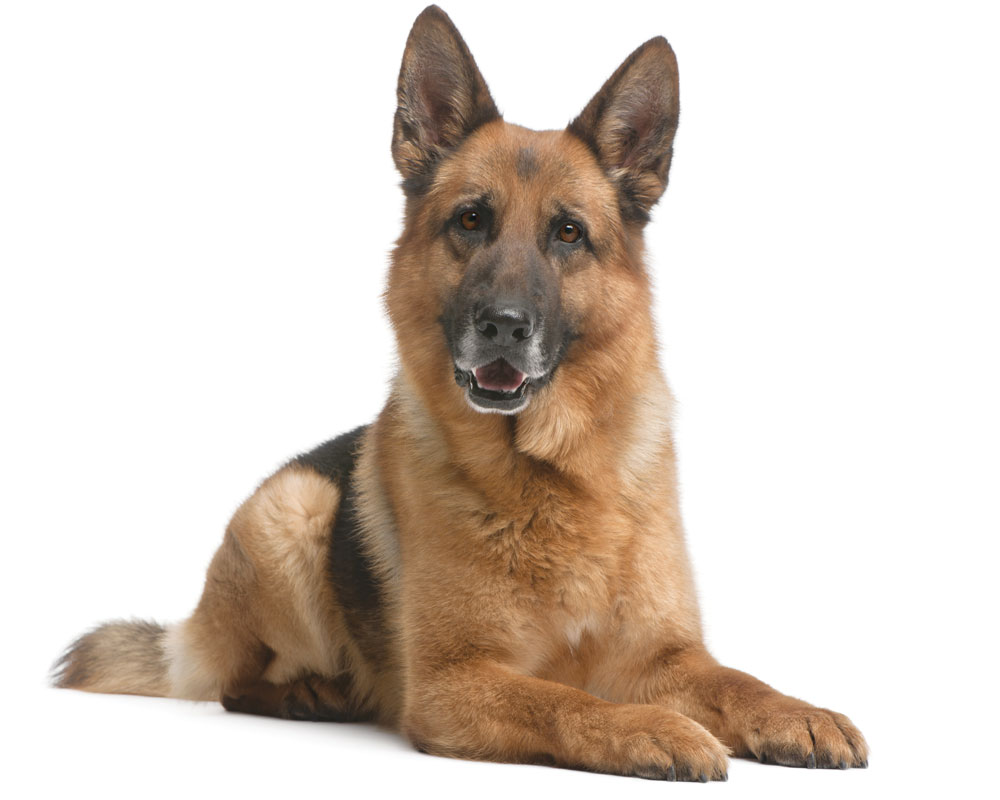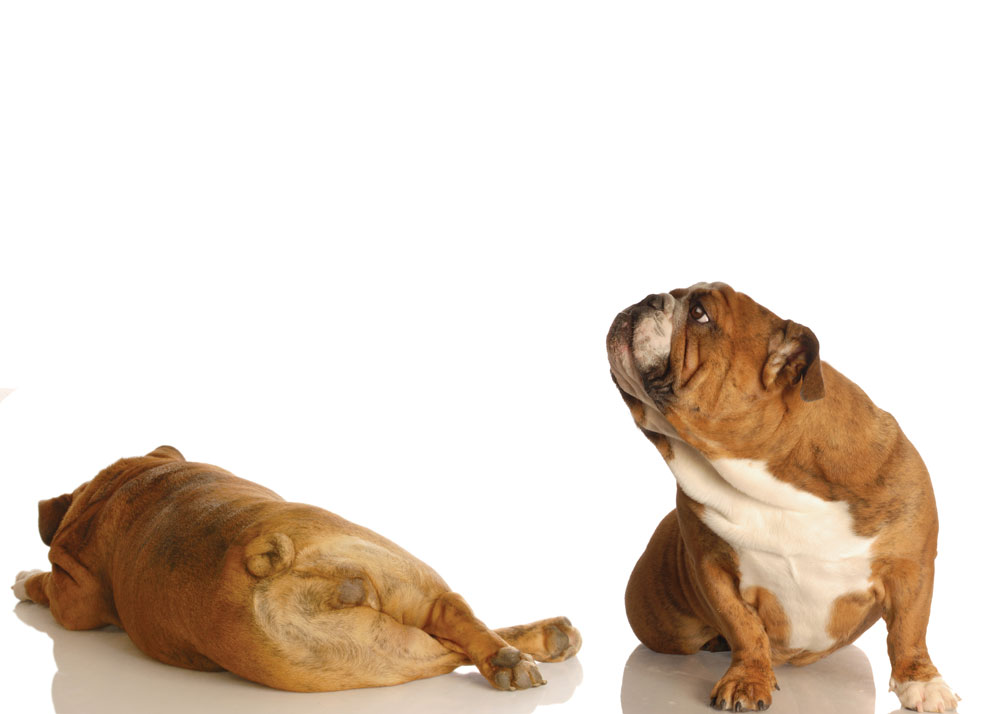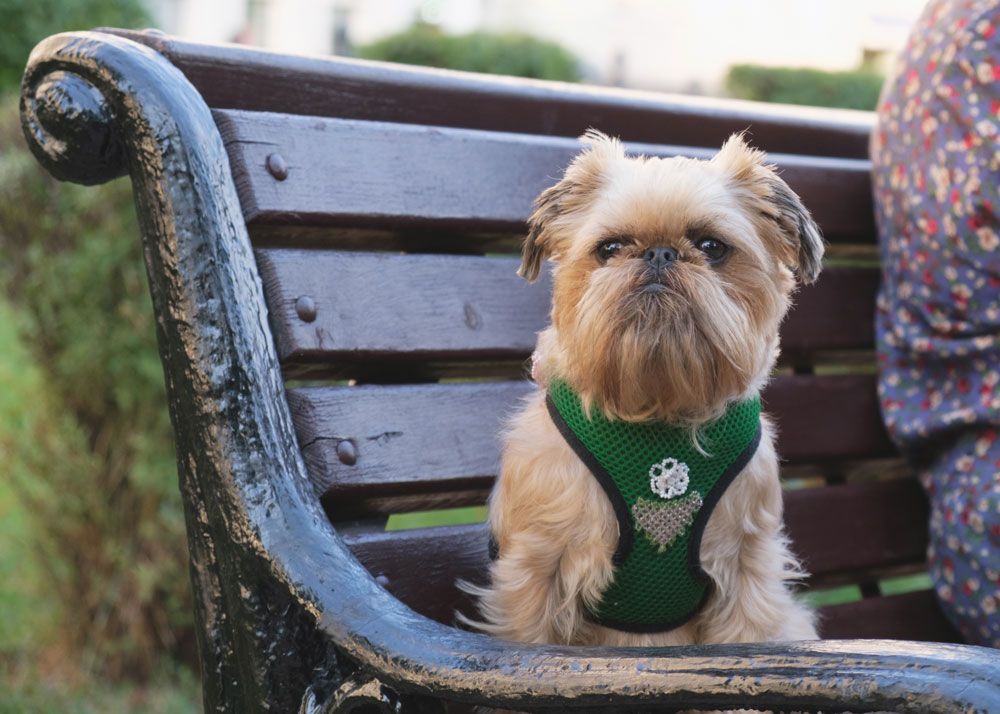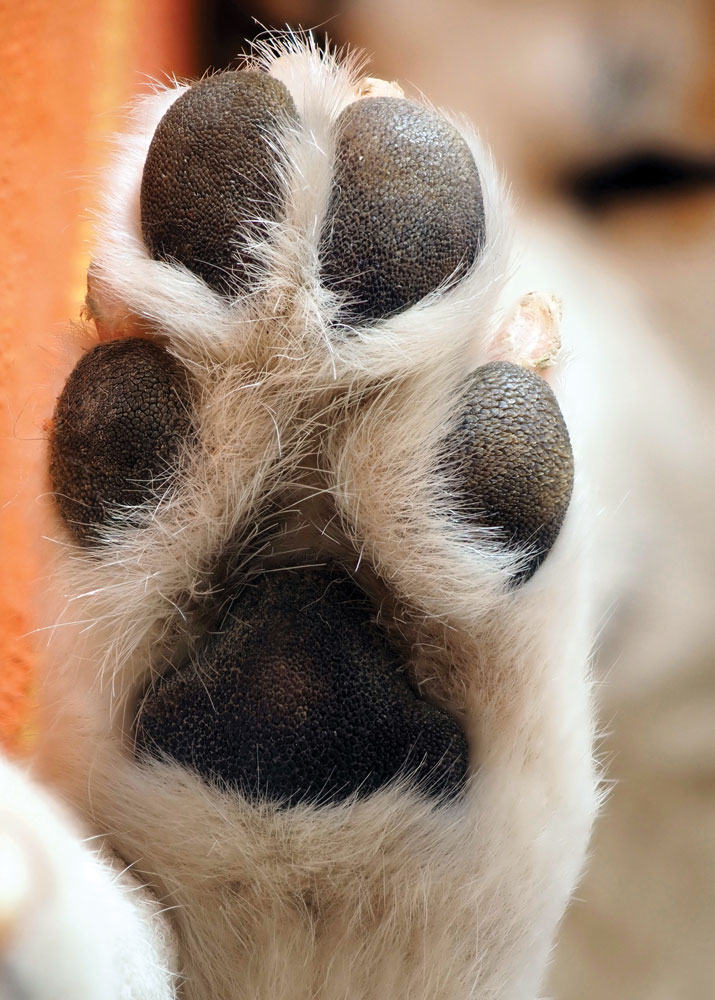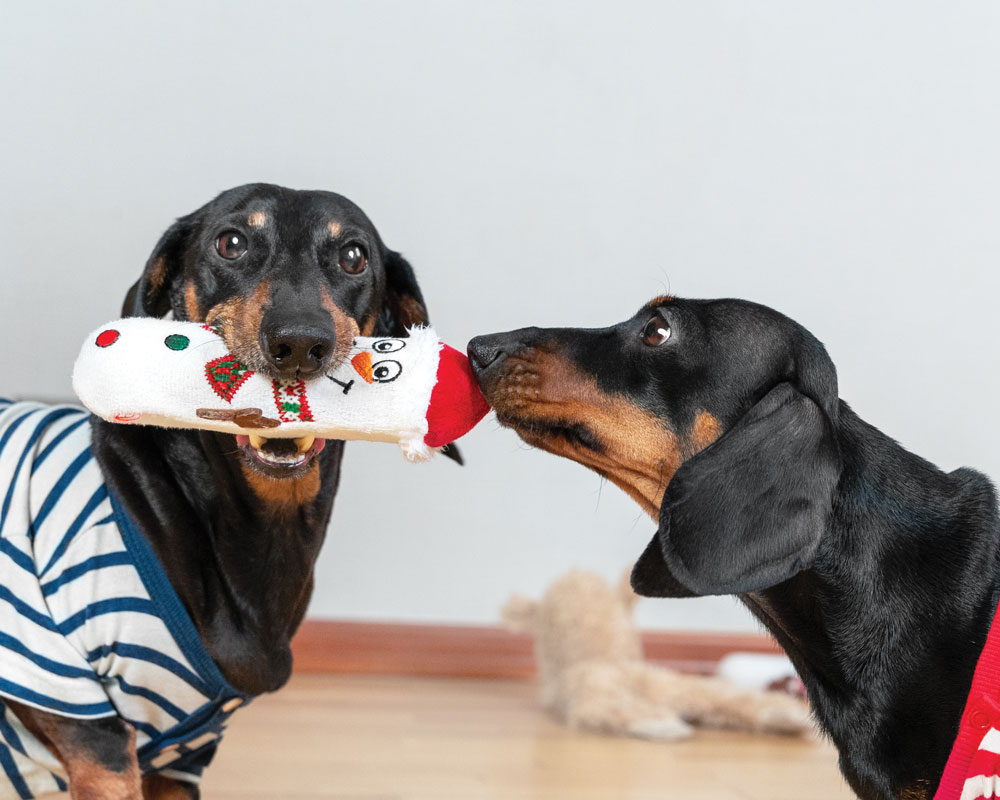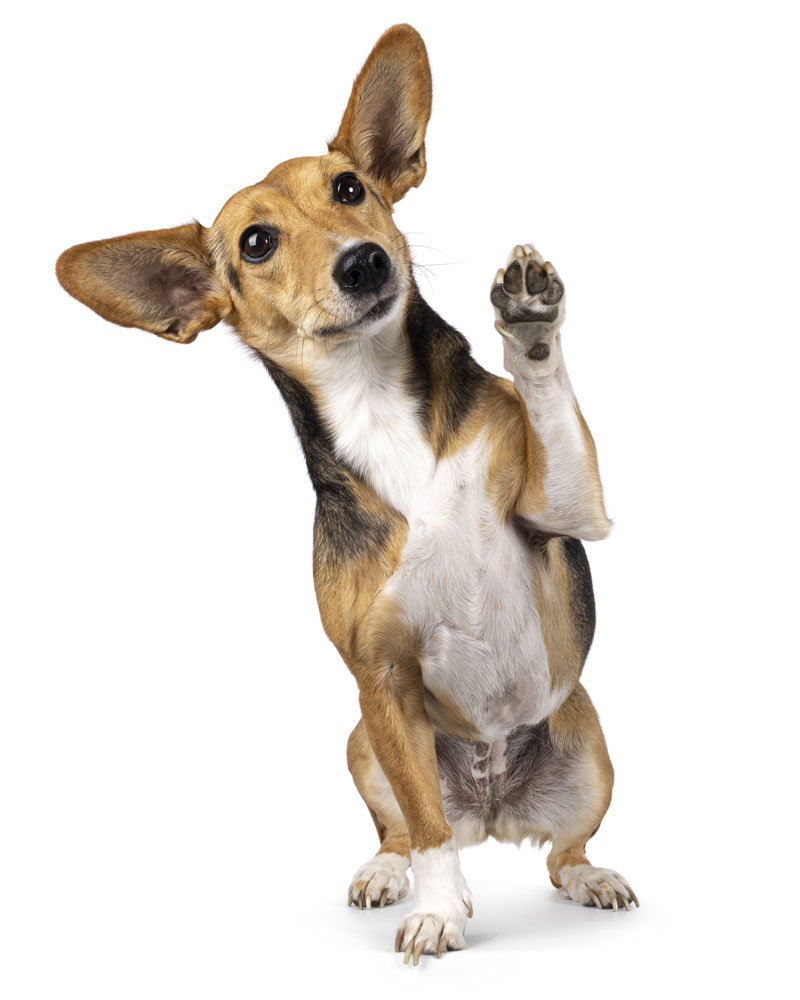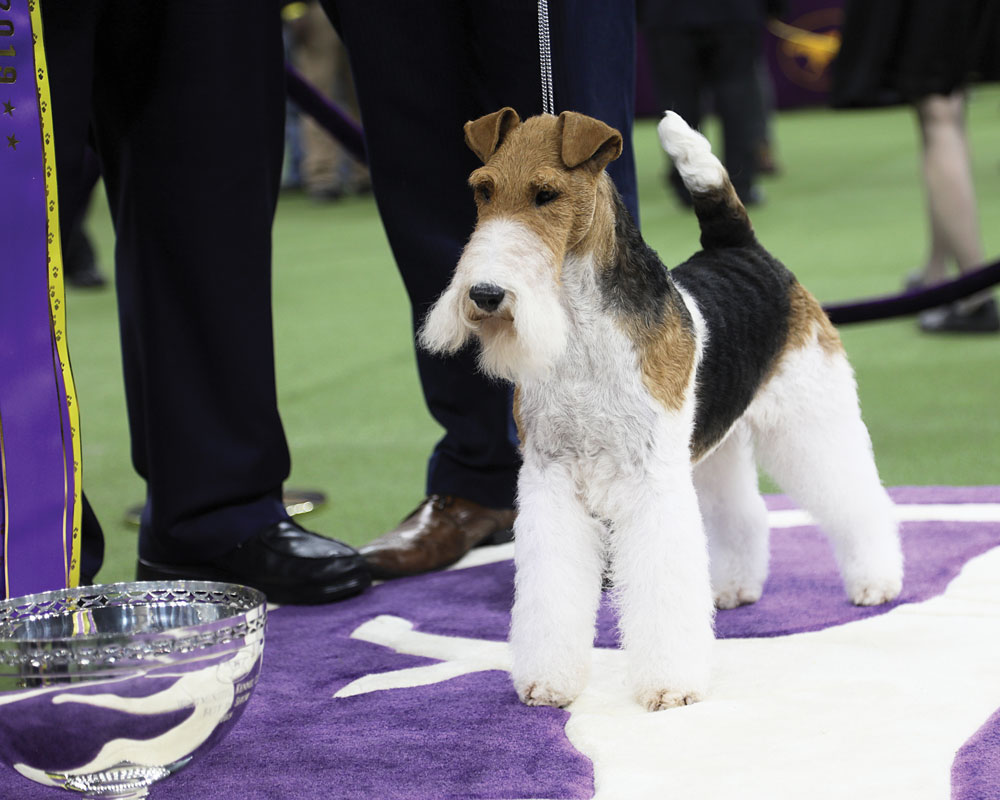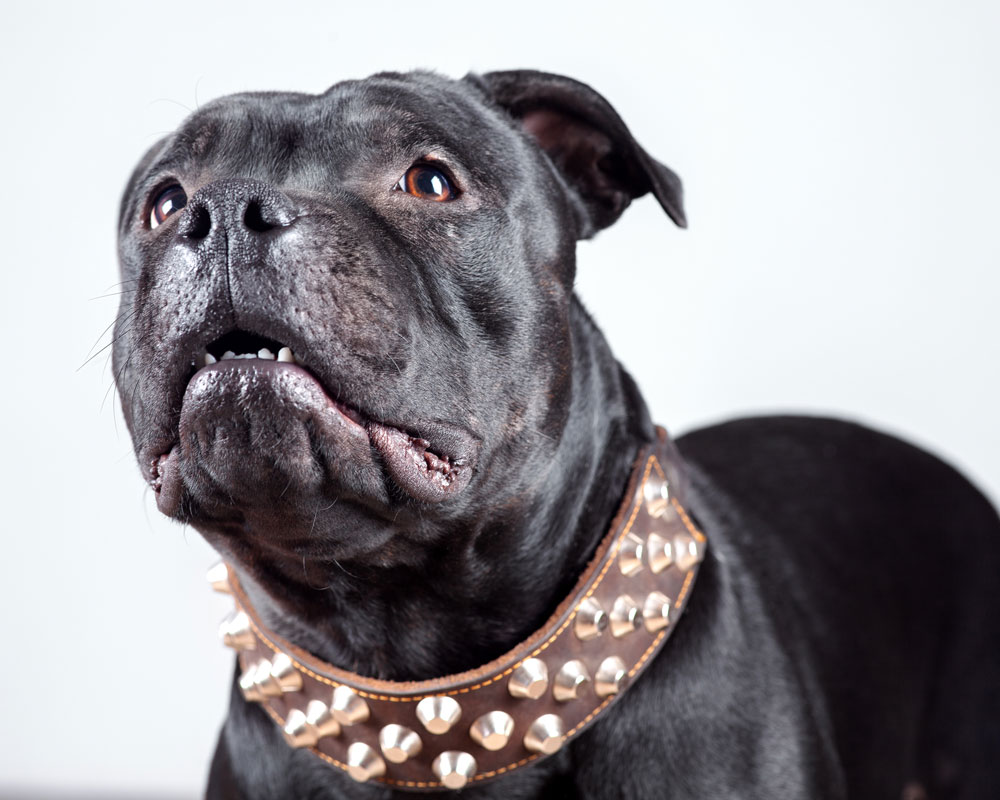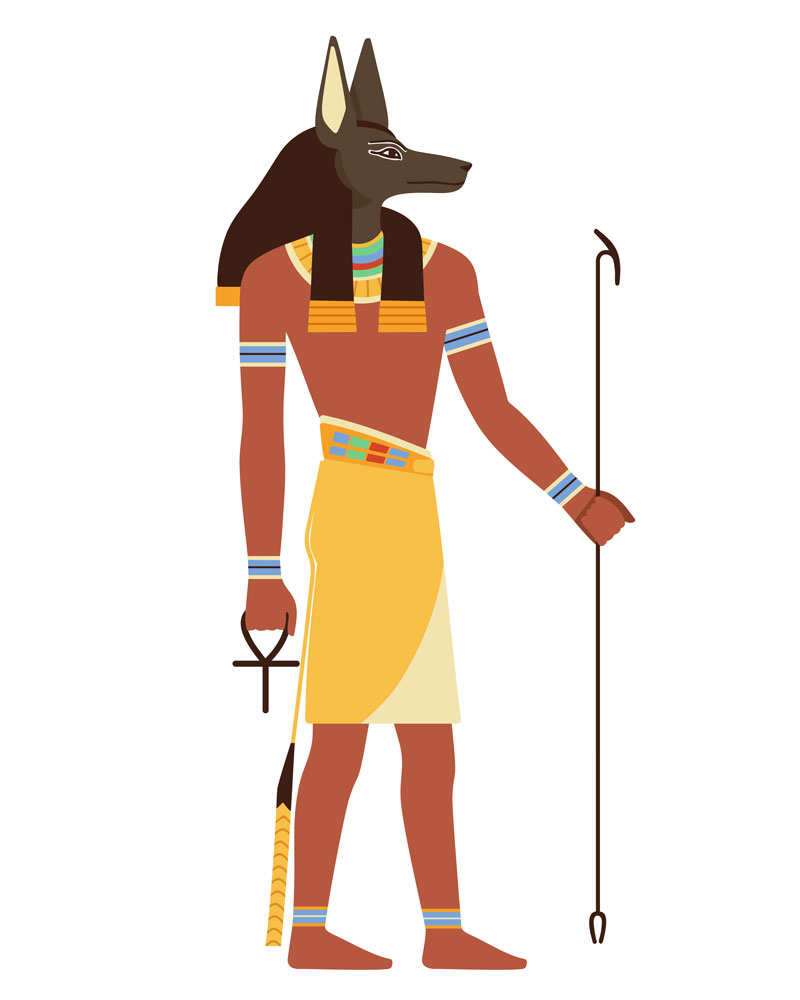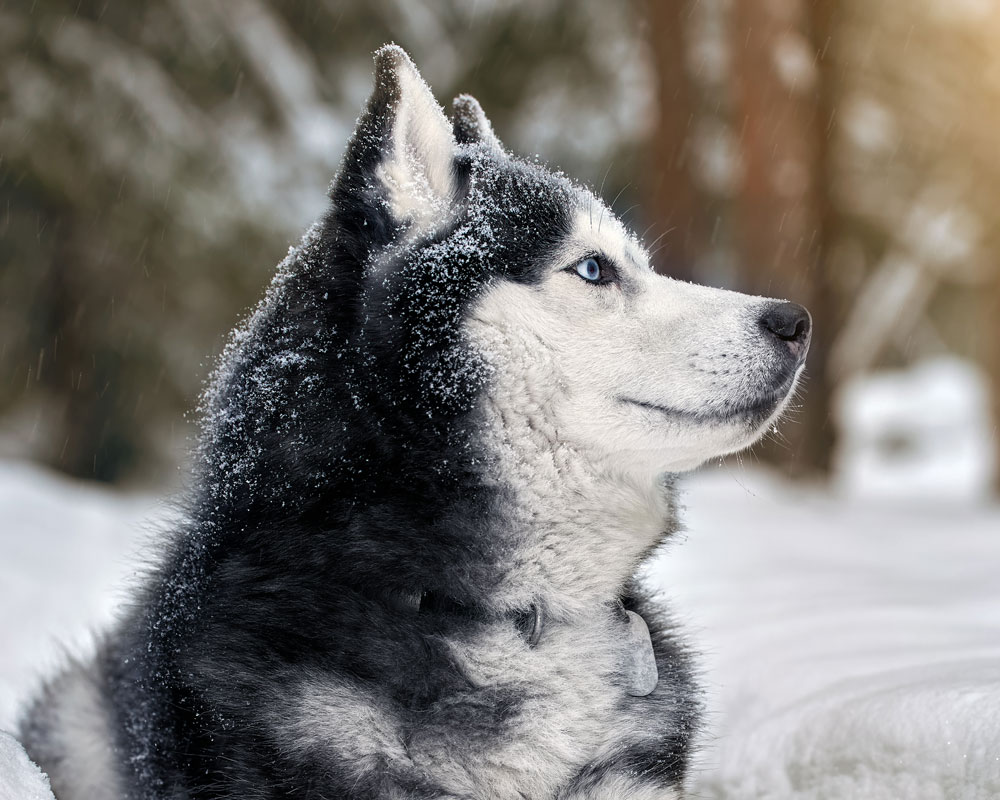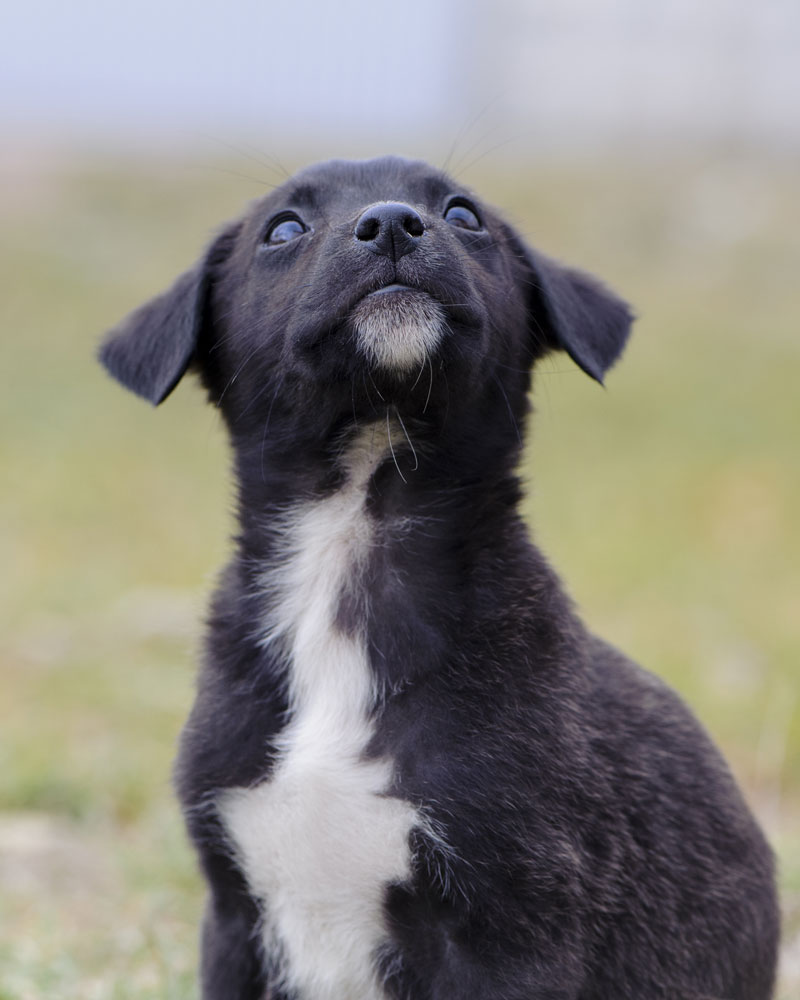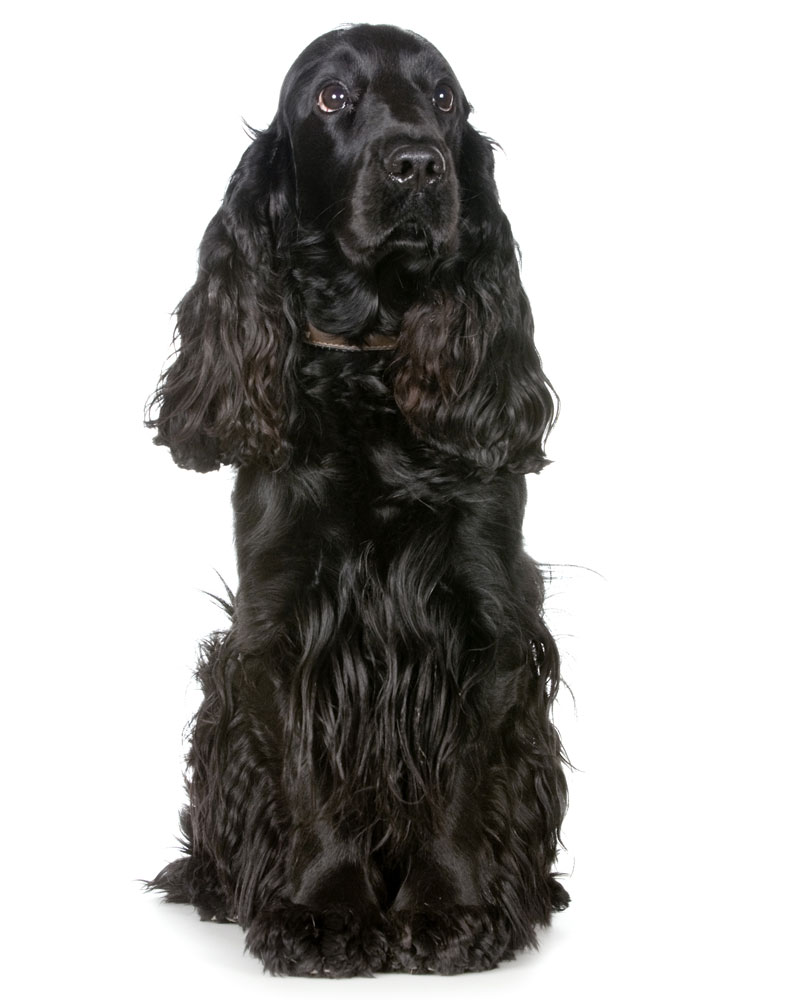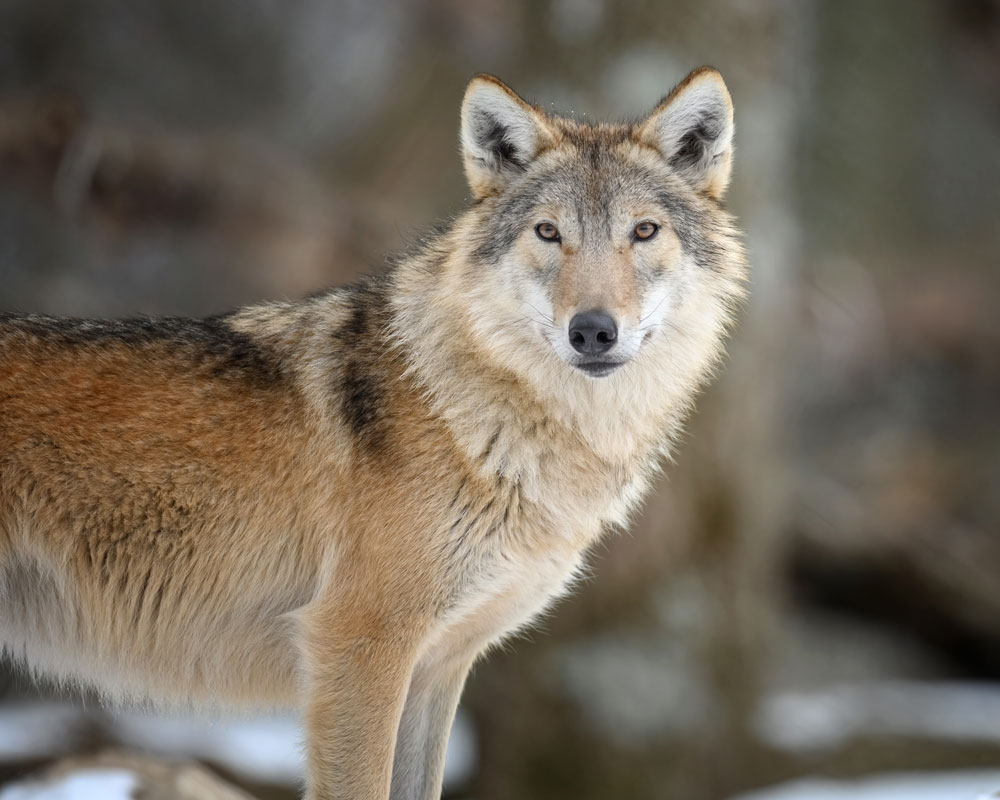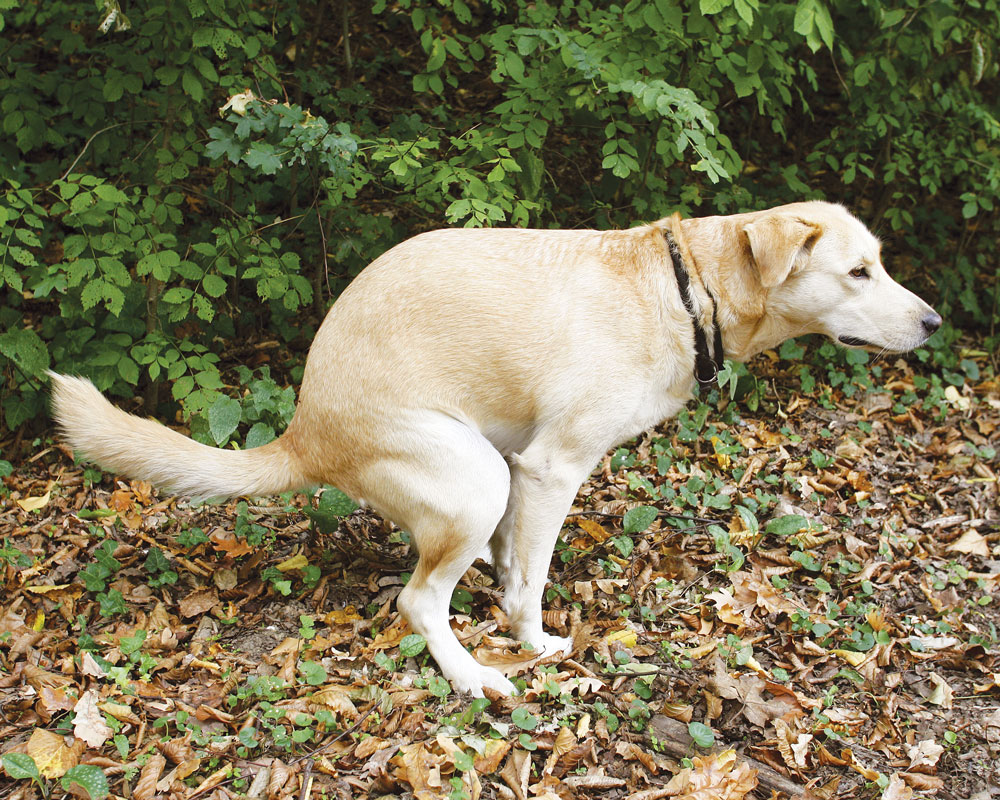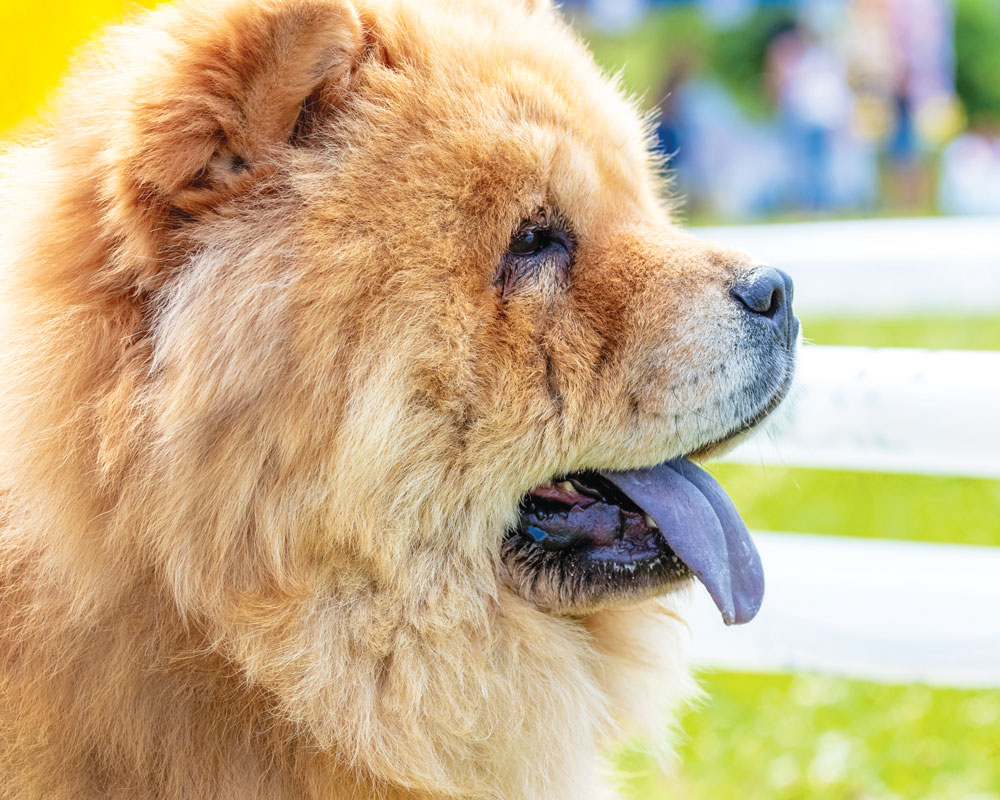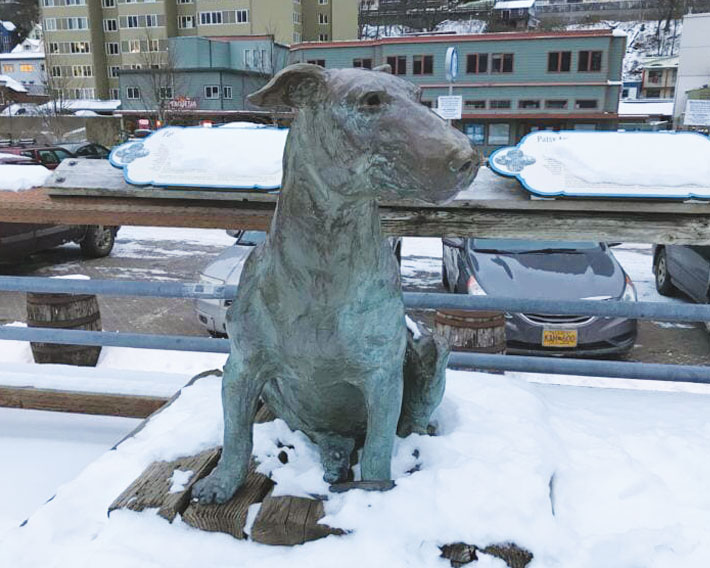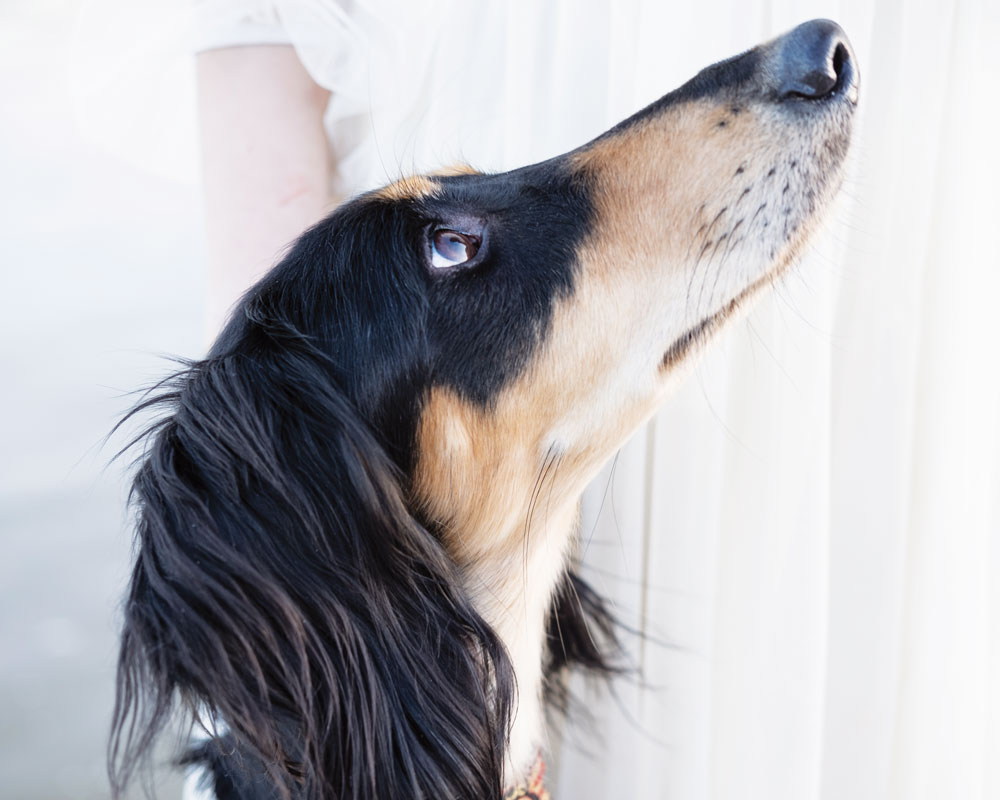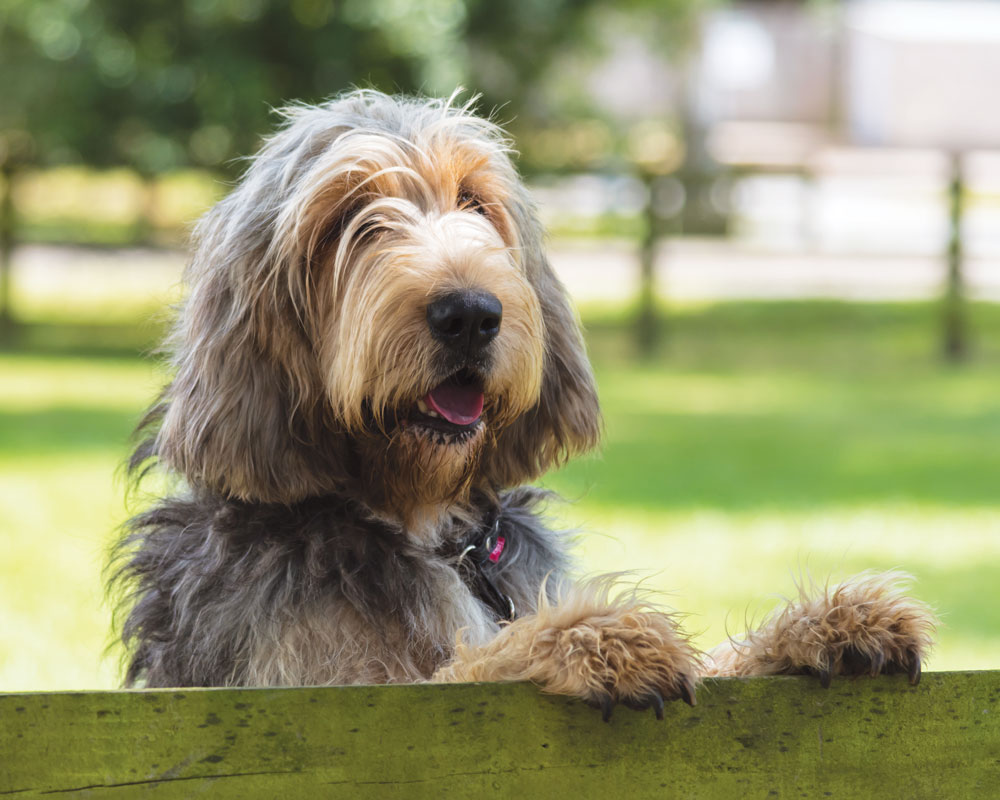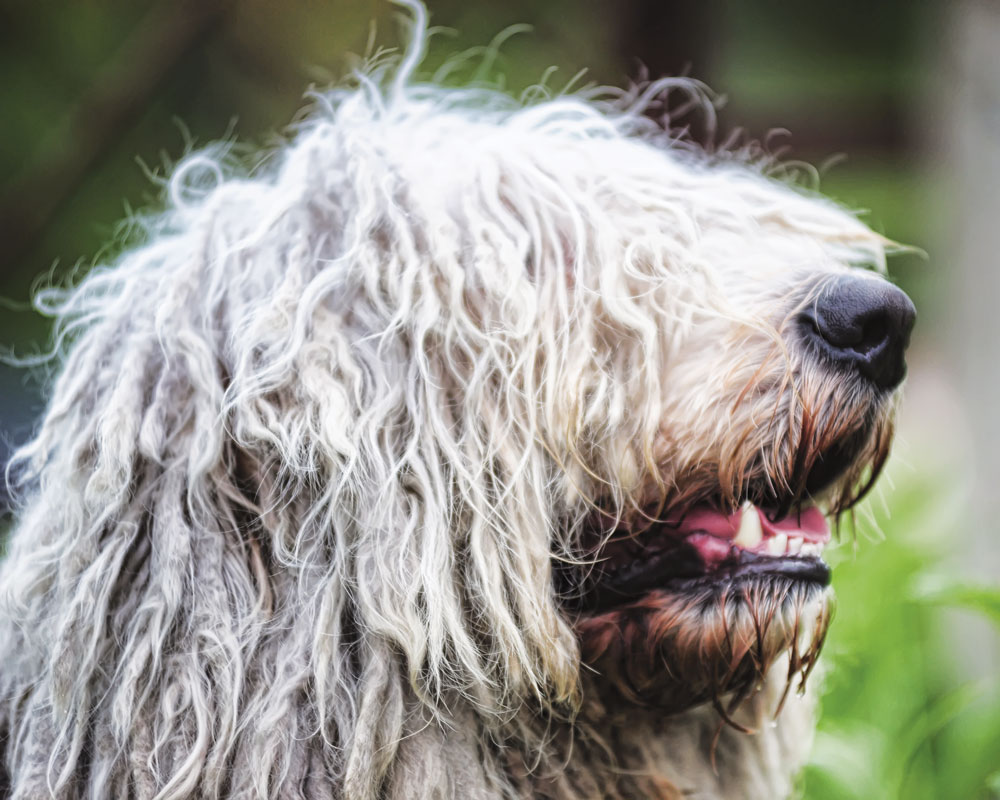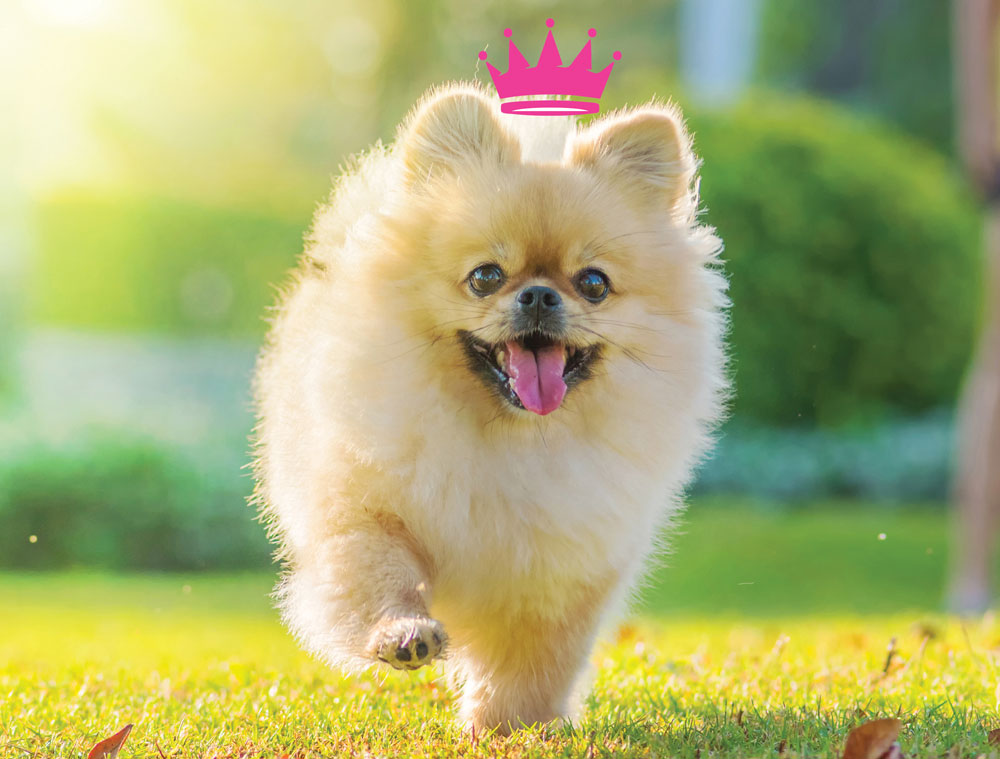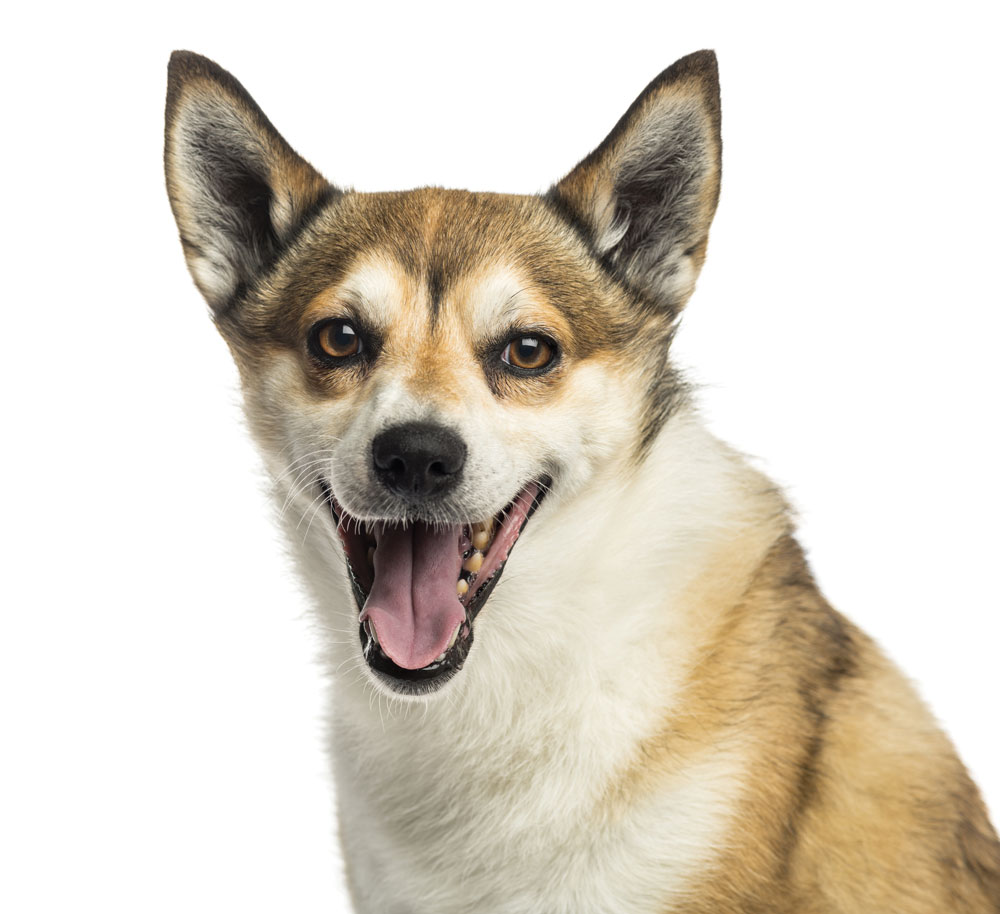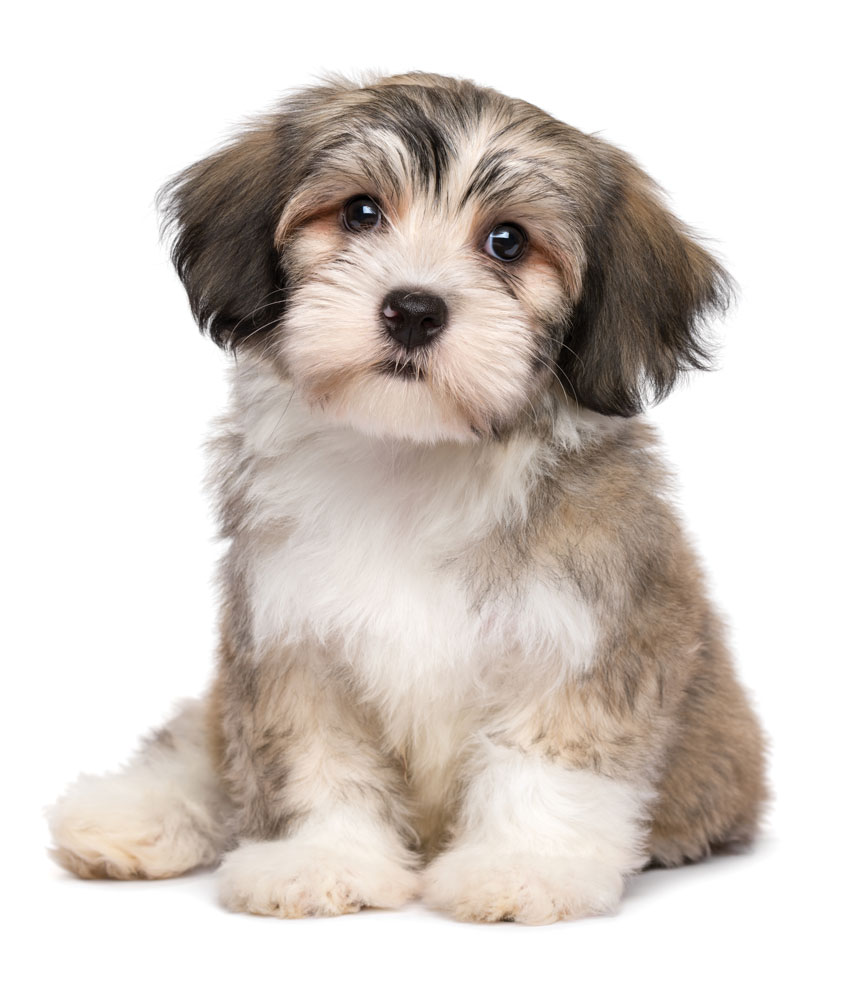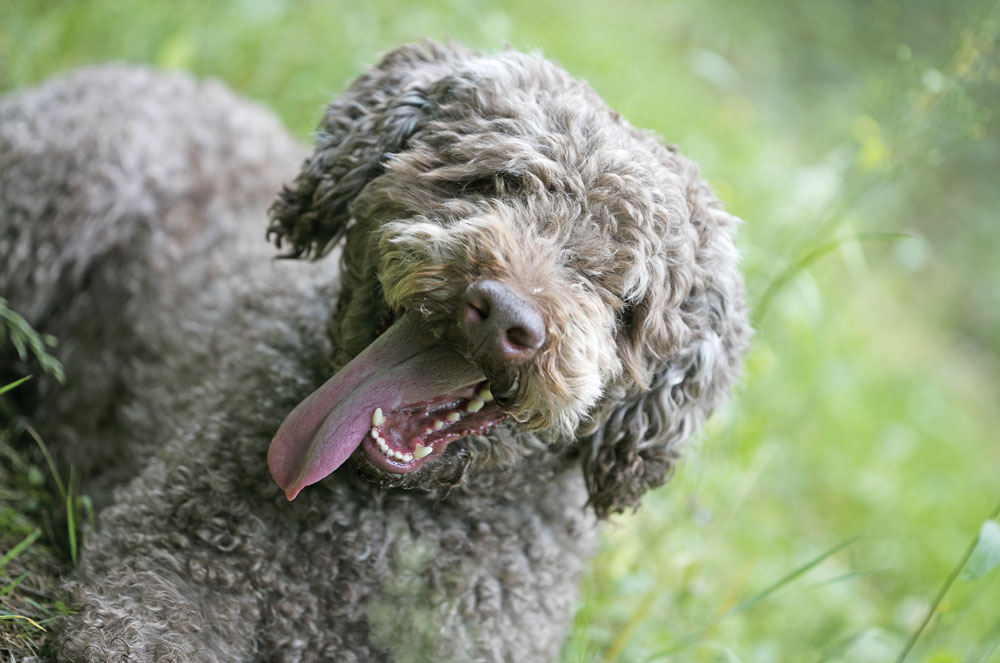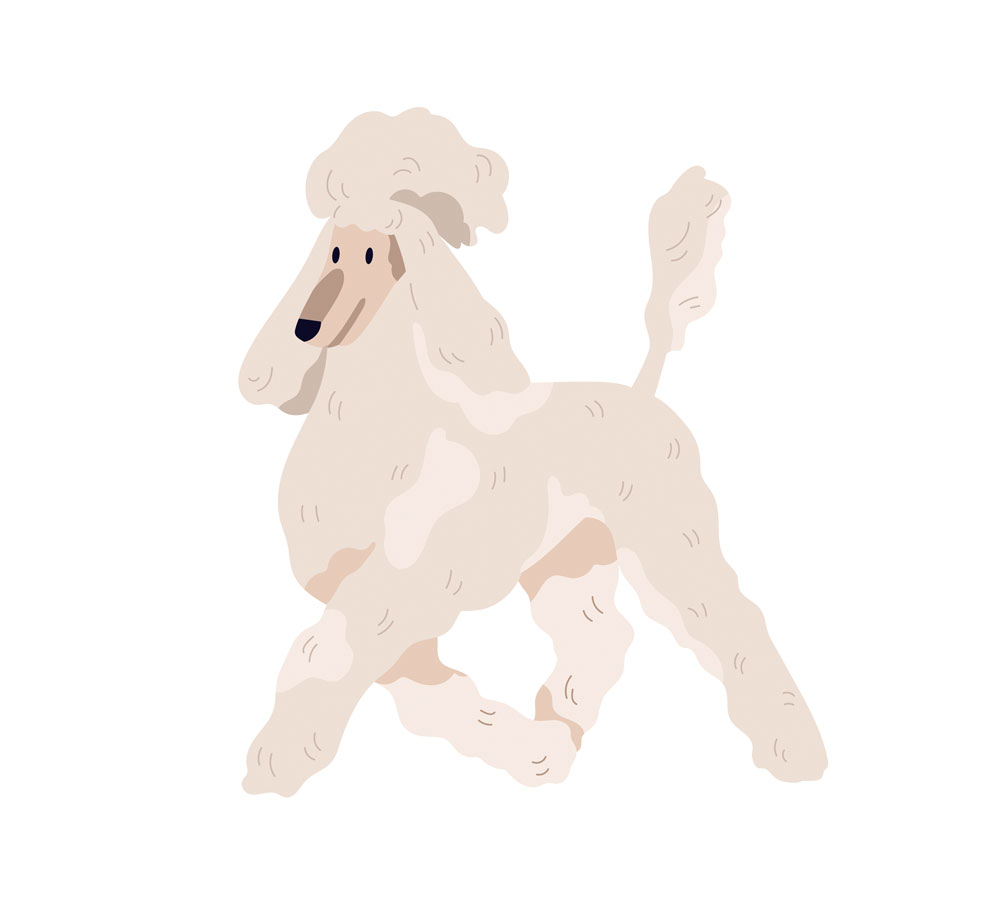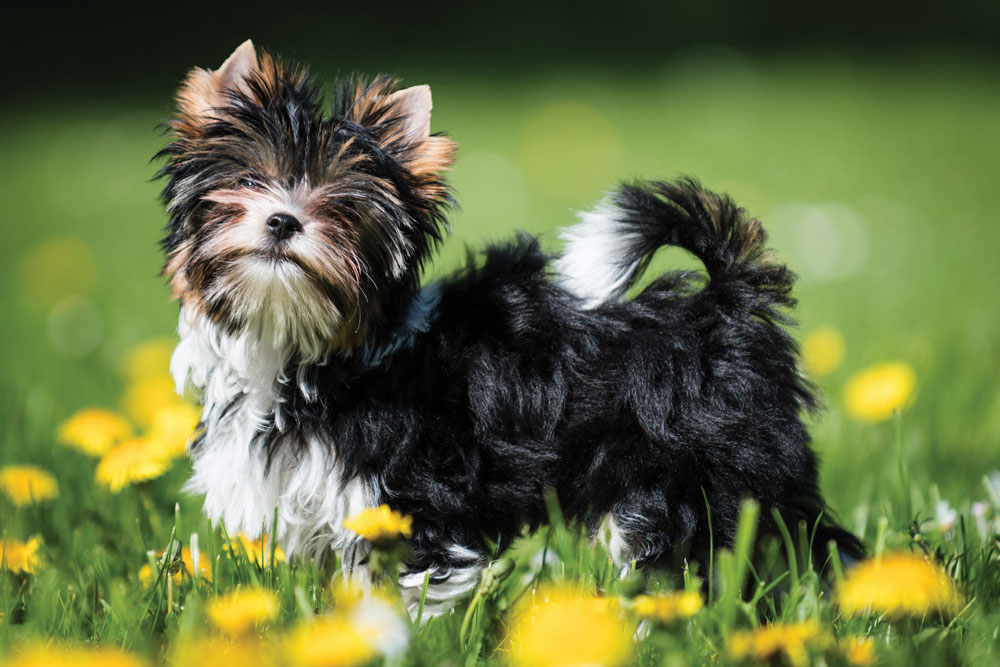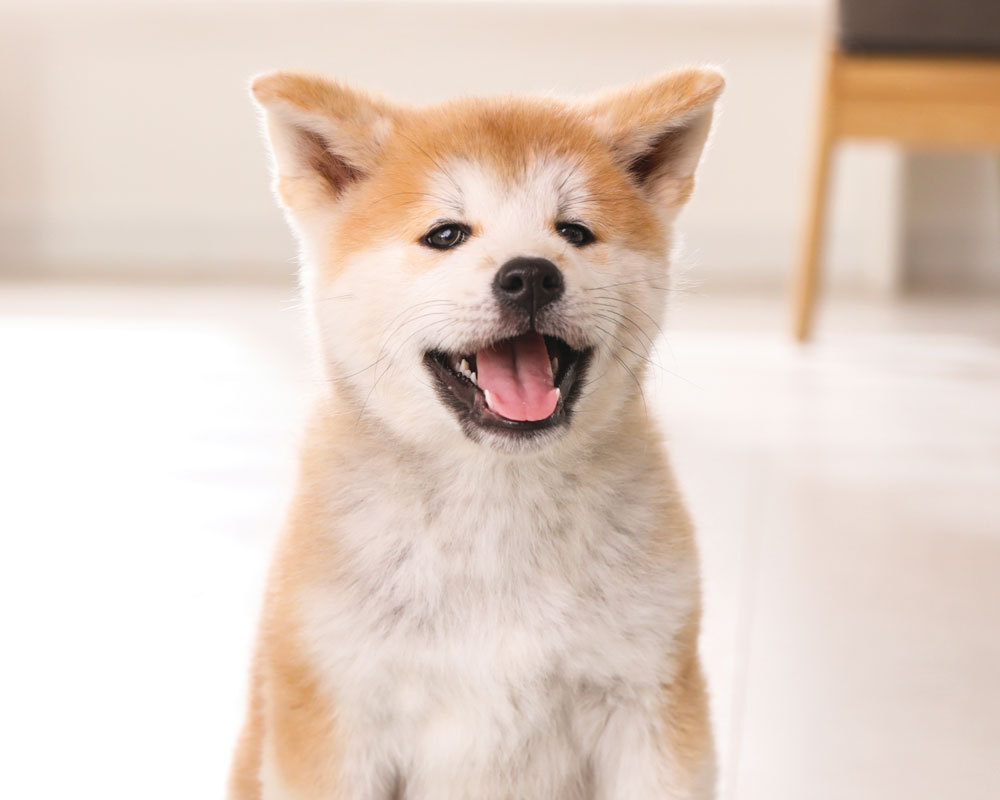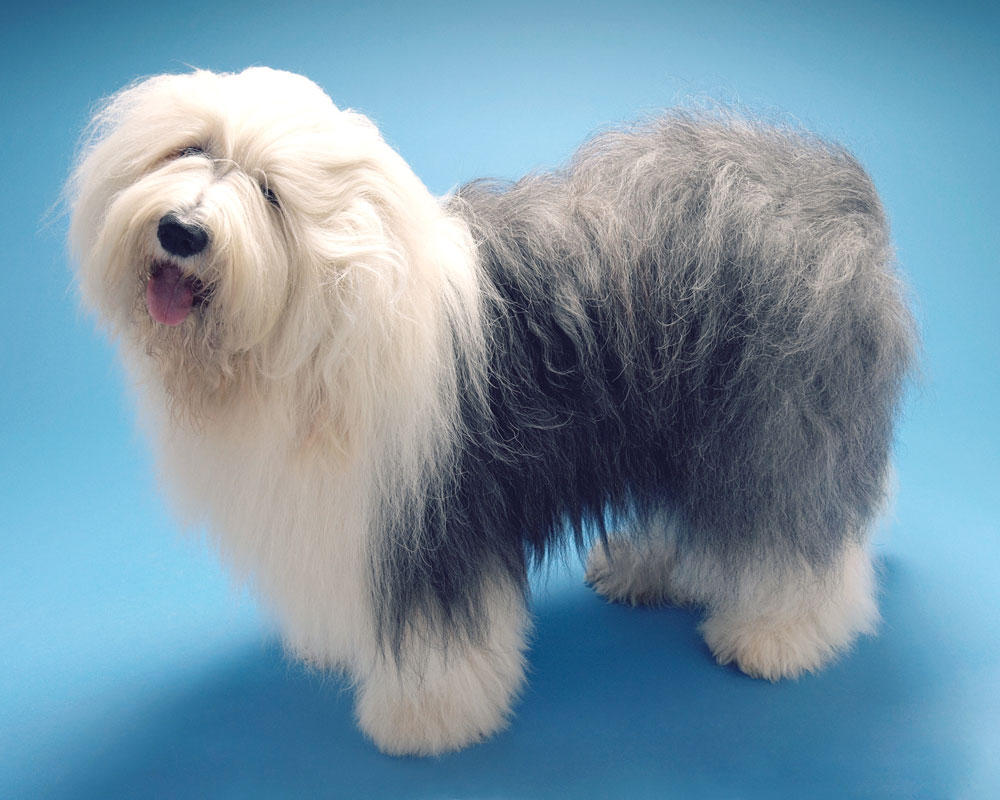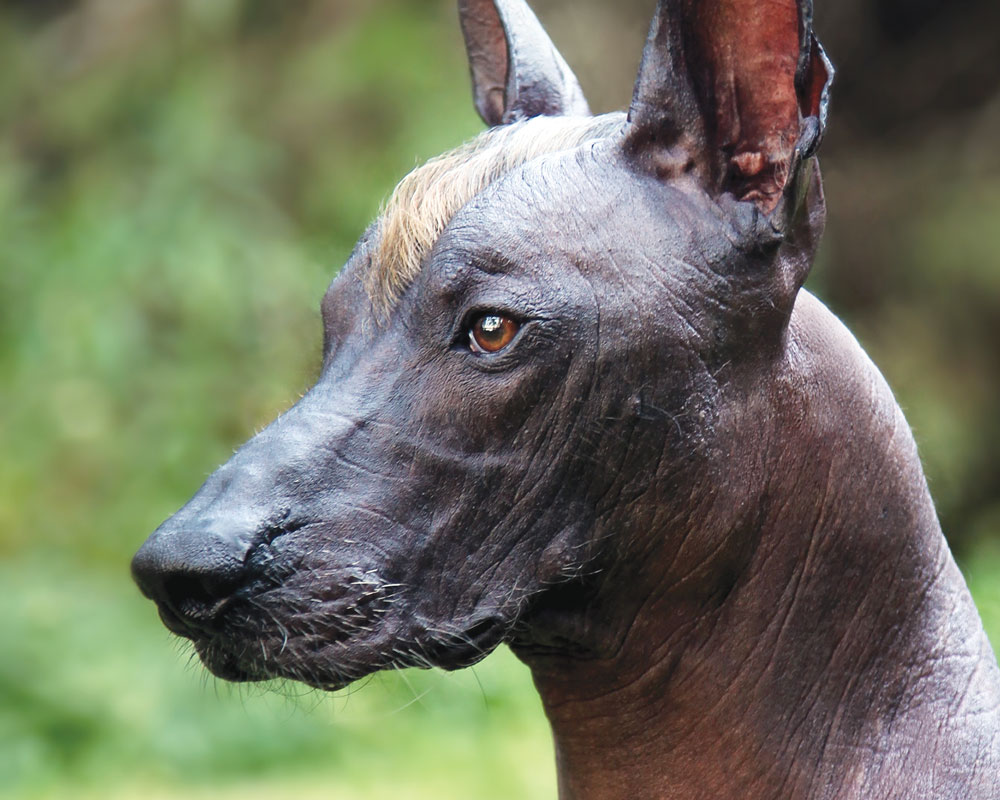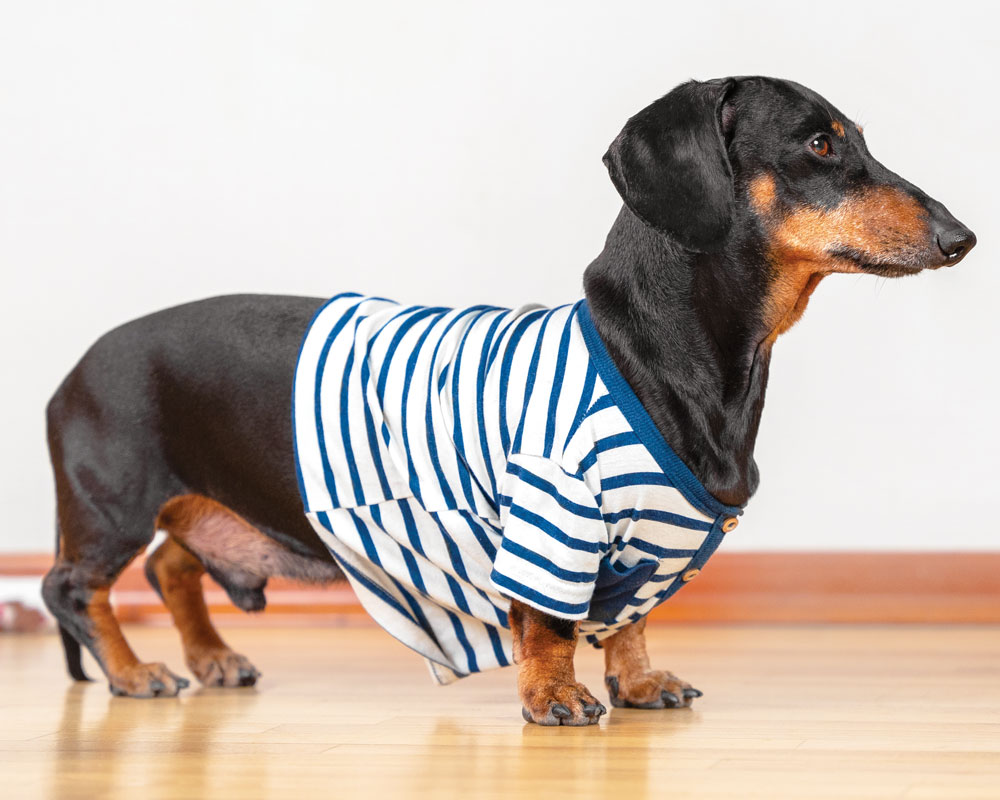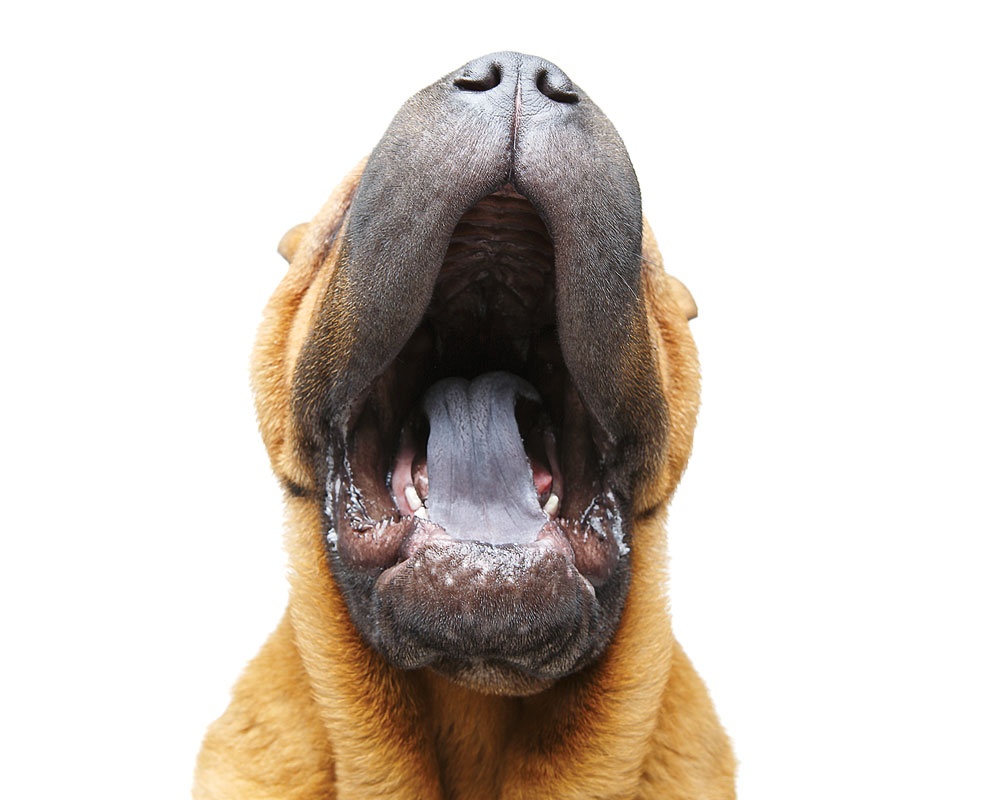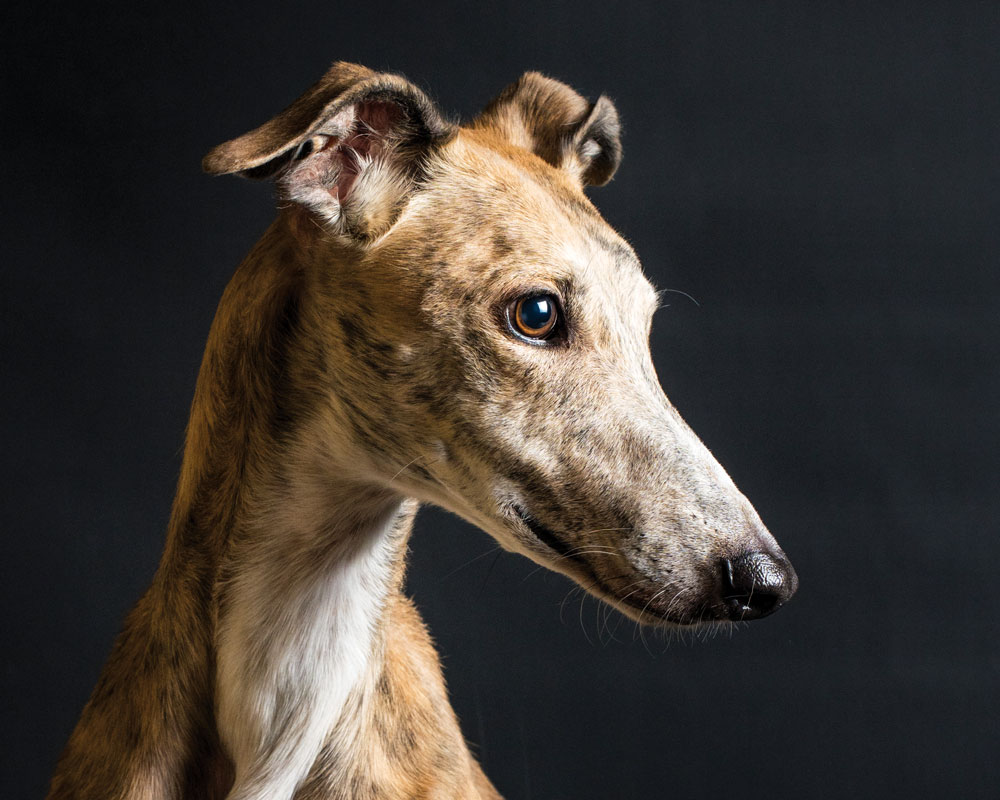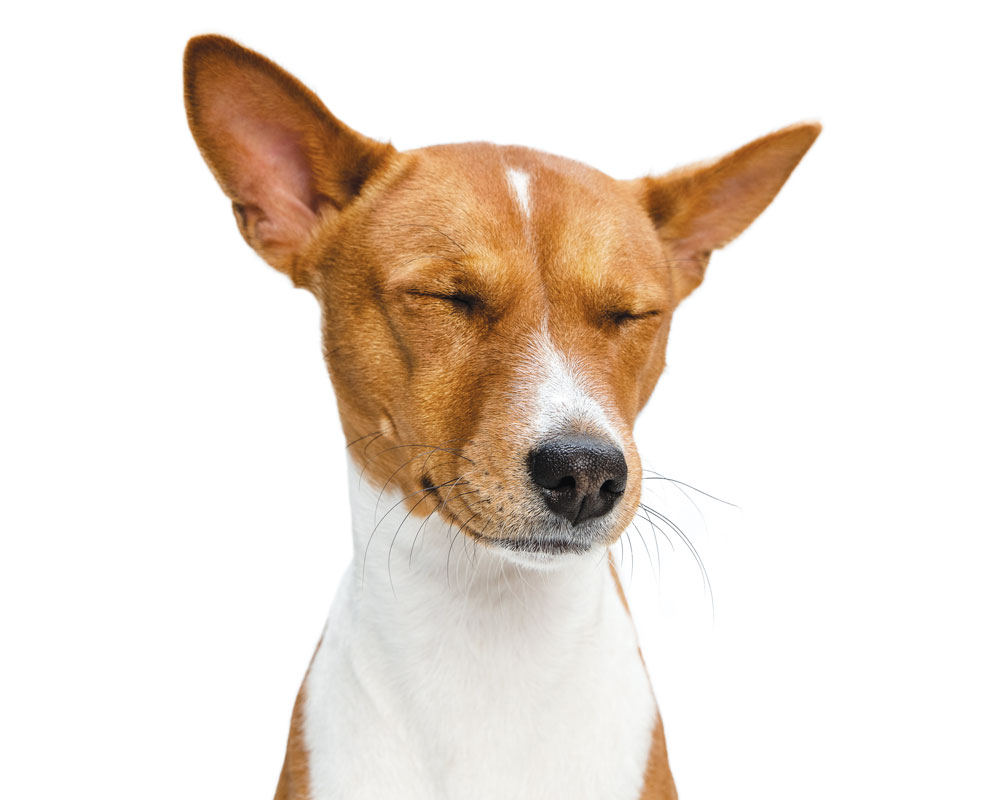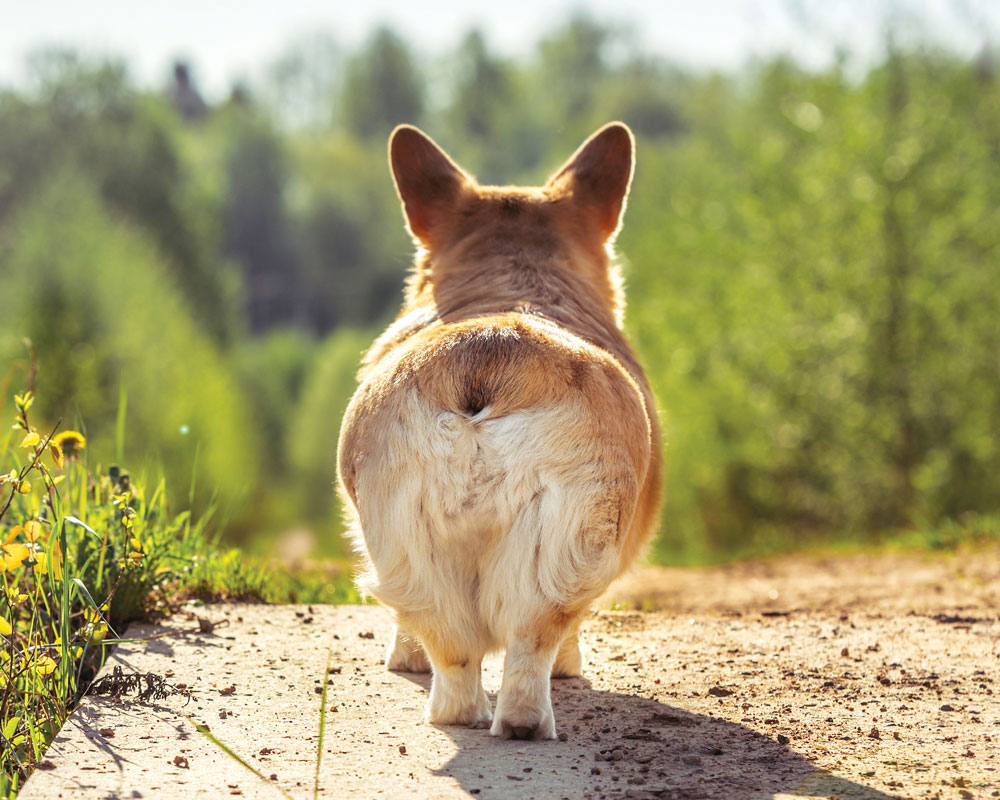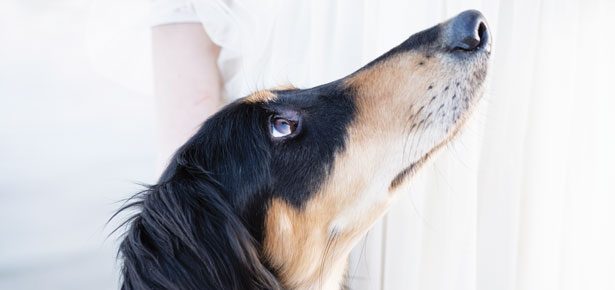
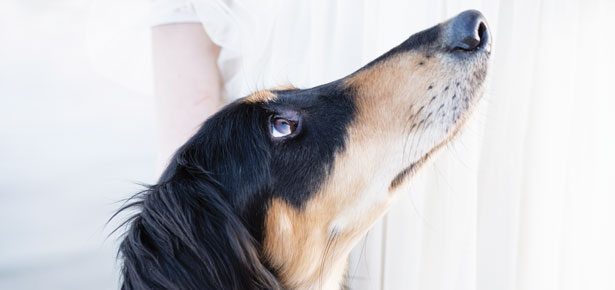
Interesting Dog Facts
Fascinating dog trivia and little-known canine facts
Photo Life on White/ bigstock.com
The Oldest Dog Breed
The Saluki holds the Guinness World Record for the world’s oldest known domesticated dog breed, believed to have emerged in 329 BC. Salukis were revered in ancient Egypt, where they were kept as royal pets and mummified after death. In Southern Iraq, there are carvings closely resembling a Saluki that date back to 7000 BC.
Photo niknikpo/ bigstock.com
Beatles Song Contains Frequency Only Dogs Can Hear
In a 2013 interview, Paul McCartney revealed a bizarre fact about The Beatles’ Sgt. Pepper’s Lonely Hearts Club Band album: it contains a sound only detectable by dogs. “We put a sound on Sergeant Pepper only dogs can hear,” shares McCartney. “If you ever play Sergeant Pepper, watch your dog.” The high-frequency 15 kilohertz sound can be detected by canines but not the human ear and is found on the final track of the album, ‘A Day in the Life.’
Photo evdoha/ bigstock.com
Super Nose
Bloodhounds can follow tracks that are over 300 hours old and have been known to stick to a trail for more than 130 miles. So strong is their drive to track that they will only relent once they’ve found the source of the smell or the trail’s gone cold.
Photo Life on White/ bigstock.com
Smarter Than Your Average Bear
The average dog can learn 165 words and signals, while “super dogs” (those in the top 20 percent of dog intelligence) can learn up to 250 words, says Dr. Stanley Coren, a psychologist and expert on dog intelligence.
Illustration Svitlana Kutsyn / bigstock.com
Dogs Can Read Your Mood
Your dog knows how you feel. A 2016 study from the universities of Lincoln and São Paolo found that dogs can understand and respond to the emotions on human faces—even in photographs!
Photo Willee Cole/ bigstock.com
Butt Sniffing Serves a Purpose
Though somewhat distasteful, butt sniffing is standard canine greeting protocol. It’s like asking, “Who are you, and where have you been?” From a whiff of a backside, your dog can ascertain the other dog’s gender, mood, what they’ve been eating, and mating potential.
Photo Vetertravel/ bigstock.com
Family’s Dog Helped Inspire ‘Jedi’ Ewoks
Ewoks, the beloved furry ‘Star Wars’ creatures from the 1983 film “Return of the Jedi,” were partly designed with Lucas’ family dog in mind, the filmmaker told a Canadian court during his testimony as a defendant in a 1990 copyright infringement case.
Photo NickAlias/ bigstock.com
Popcorn Toes
If your dog’s feet smell like popcorn or corn chips, fear not. A subtle tortilla smell is completely normal and likely the work of the bacteria proteus or pseudomonas. Dogs have a lot of bacteria and yeast that grow in the folds and pockets of their paws. If the smell is light and your dog isn’t worrying about his paws, all is good.
Photo Masarik/bigstock.com
Dogs Get Jealous
If you’ve ever thought your dog was jealous, you’ve likely been right. A 2014 study demonstrated that dogs do feel put out when you give attention to
other dogs.
Photo nynkevanholten/bigstock.com
The Right Paw
Did you know dogs can be right or left pawed? Like us, dogs have a dominant hand—or paw, in their case. To tell which is your dog’s dominant paw, watch them walk. Do they start walking with their right or left leg? Watch several times. Many dogs will lead with the same leg—this is their dominant one!
Photo androsov858/bigstock.com
Hot Dogs Named After Wiener Dog
The street-vendor classic was originally known as a Dachshund sausage, named for its resemblance to the short-legged, long-backed dog. There are conflicting stories as to the name’s origin and why it was changed, but one theory is the name was shortened to hot dog when a cartoonist didn’t know how to spell the original moniker and depicted barking Dachshund sausages nestled in rolls, captioning the cartoon “hot dog!”
Photo J. Grassa for WKC
Best In Show
Wondering what breed has won the most at the Westminster Kennel Club Dog Show? Don’t look to the beloved retrievers—terriers are the winningest by far. They’ve taken home nearly a third of all Best in Show prizes awarded since the dog show’s beginnings in 1877. Of all breeds, Wire Fox Terriers sit at the top for Best In Show wins, accounting for 12 in total.
Photo xolodan/bigstock.com
Ancient Accoutrements
Spiked dog collars were invented in ancient Greece to protect dogs’ throats from wolves. The practice of putting a dog’s name on its collar, commonplace today, first appeared in ancient Egypt.
Illustration goodstodio/bigstock.com
God-Like Dogs
In ancient Egypt, dogs were associated with the jackal-god Anubis, guide to the afterlife. Ancient breeds like the Saluki lived pampered lives in palaces. They had their own servants and wore jeweled collars. Dead rulers were often buried with their canine companions, as they believed their dogs would protect them in the afterlife.
Photo westsib/bigstock.com
How Dogs See the World
Many people mistakenly think dogs are colour blind when in fact, dogs have two colour receptors (cones) in their eyes, allowing them to see blue and yellow. This limited colour perception is called dichromatic vision. Dogs are unable to perceive red or green, nor can they perceive shades of these colours, such as orange, pink, and purple.
Photo oleksandr filatov/bigstock.com
Puppy Dog Eyes
The eyes have it. A 2017 study found that dogs raise their eyebrows to give “puppy eyes” and make other dramatic facial expressions when they know humans are watching. Shelter dogs have learned this trick, too, and to great effect—the same study found that shelter pups who deploy “puppy dog eyes” are adopted more quickly than dogs that show other behaviours, like wagging their tails.
Photo life on white/bigstock.com
It’s All in the Name
In 2021, the most common dog names included Bella, Luna, Lucy, Max, and Charlie. But this wasn’t always the case. Popular dog names from Medieval times included Blawnche, Nosewise, Smylfeste, Bragge, Holdfast, Zaphyro, Zalbot, Mopsus, and Mopsulus, reports Mental Floss.
Photo byrdyak/bigstock.com
Descendants of Wolves
Dogs evolved from a now-extinct species of wolf. Dogs were the first animal domesticated by humans over 20,000 years ago. Through the process of domestication, their skulls, teeth, and paw size diminished, and desired traits such as docility and obedience became common.
Photo paul prescott/bigstock.com
Poop Preference
Dogs do their business in alignment with the Earth’s magnetic field, a study published in the journal Frontiers in Zoology revealed. In a free-roaming environment without directional variables, dogs preferred to “excrete with the body being aligned with the north-south axis.”
Photo MVolodymyr/bigstock.com
Blue Bloods
Chow Chows are known for their ink-blue tongues. However, the unique breed is initially born with a pink tongue, and the blue pigment develops as their eyes open.
Photo patsyann.com
A Bull Terrier’s Enduring Legacy
Patsy Ann, an English Bull Terrier, was dubbed the “Official Greeter of Juneau, Alaska.” Though Patsy Ann was born deaf, she had a knack for “hearing” ship whistles before they were visible to the human eye. From 1929-1942 she would wait on the correct dock and welcome ships as they pulled in. 50 years after her death, her statue was commissioned by the Friends of Patsy Ann and installed on the wharf she knew so well, where she continues to greet locals and visitors alike.
Photo Izemphoto/bigstock.com
An Ancient Beauty with Fleet Feet
Though a slower sprinter than the Greyhound, the Saluki is faster over longer distances, running upwards of 35 mph. It is one of the oldest dog breeds. Remains of this ancient sighthound have been found in Egyptian tombs, and depictions of a slender dog with feathered ears, tails, and legs have been discovered on Middle Eastern artifacts dating back more than 5,000 years. Though delicate looking, these dogs can go the distance. They hunted with their nomadic owners, Arab tribesman who applied nut oil to harden and protect their dogs’ feet against harsh terrain.
Photo Vkook Design/bigstock.com
Your Empathetic Dog
Have you ever caught a yawn from someone else? You’re not alone. Psychologist Ramiro Joly-Mascheroni from the University of London demonstrated that the sight and sound of human yawns are also contagious to domesticated dogs. This is thought to be indicative of dogs’ capacity for empathy towards humans.
Photo Lourdes Photography/shutterstock.com
This Breed Takes the Plunge
As their name suggests, Otterhounds were bred for hunting otters across water and land. Not a breed to shy away from a plunge, Otterhounds drink from the bottom of their water bowls, submerging their whole head (and making a huge mess!).
Photo evdoha/bigstock.com
There’s a Dog in our Midst!
The Komondor’s unique coat isn’t just a chic style choice—it’s camouflage! Unsuspecting wolves would target a flock of sheep, only to find a fierce, woolly Komondor hidden in their midst.
Photo Xansa/bigstock.com
Want Her Number? Get a Dog
Turns out having a pet does make you more attractive. A study undertaken by Nicolas Gueguen, a psychology professor at the University of Bretagne-Sud, and his colleague Serge Ciccotti revealed that women were three times as likely to give their number to a man if he had a dog with him.
Photo wirakorn/bigstock.com
Fit for royalty
Though known for its adorably diminutive stature and lion-like fluffy coat, the Pomeranian actually hails from the same Spitz family as the much larger Samoyed and Malamute. In 1888, Queen Victoria brought the Pomeranian to England and bred them to compete in dog shows. Her preference was for smaller Poms, and during her lifetime, the breed's size decreased by half.
Photo Bakalaero/bigstock.com
Meet the 6-toed Norwegian puffin hunter that can scale rock walls!
Looking for a rare dog? Look no further than the Norwegian Lundehund, an agile breed that has adapted to hunt puffins around its native coastal cliffs of Norway. Aided by its well-padded six-toed front paws, flexible shoulders, and an “elastic” neck that can bend backwards to touch their spine, the unique build of the Lundehund allows them to scale massive rock walls and wiggle into small crevices to snap up their prey.
Photo mdorottya/bigstock.com
What the Dickens
Author Charles Dickens owned a Havanese named Tim, who was beloved by Dickens’ ten children. Many speculate the dog was the inspiration for “Tiny Tim” from A Christmas Carol.
Photo Bakalaero/bigstock.com
This Truffle Hunting Dog could make you Rich
Also known as the Romagna Water Dog, the Lagotto Romagnolo is the world’s oldest water retriever. Like other water dogs, the Lagotto has a weatherproof coat and muscular build that helped it hunt fowl through the Italian marshlands. Unlike other water dogs, their hyper-sensitive nose is now used for a more delicate purpose—sniffing out delicious truffles! In locating this ‘edible gold,’ your Lagotto could help pay the bills; a single truffle can cost up to $3,800.
Illustration goodstudio/bigstock.com
Fancy, schmancy!
Don’t be fooled by the precious hairdo. Belying its looks, the Poodle is a star athlete through and through. The classic “Continental” poodle cut was actually created to optimize the breed’s hunting performance—the Poodle was originally developed to hunt ducks and other waterfowl. The frequently perceived as fussy trademark haircut allowed Poodles a full range of motion when in the water while keeping the joints warm and the eye-line clear. (The pom-poms over the kidney area are called rosettes.) The finishing touch, the jaunty ball on the tail, kept the tip from getting frostbite.
Photo stockfotocz/bigstock.com
No, it’s not a Yorkie
The first Biewer (pronounced “beaver”) Terrier was born in 1984—a relative newcomer compared to breeds like the Akita, whose lineage can be traced back 10,000 years. Bred by Mr. and Mrs. Biewer, two passionate Yorkshire Terrier lovers, the Biewer Terrier has a “piebald” gene, giving it a distinctive spotted coat. Genetic testing determined the Biewer possesses genes distinguishing it from the Yorkshire Terrier, and in 2021, the American Kennel Club recognized the Biewer as a distinct breed.
Photo New Africa/bigstock.com
Akita, Symbol of Happiness
Akitas originate from the Akita Prefecture in Japan, where they are a symbol of good health, happiness, and longevity. Like their cousin, the Shiba Inu, Akitas love to keep clean. They are easily house trained and “groom” themselves in a cat-like fashion.
Photo Nosnibor137/bigstock.com
Clang!
Be forewarned: the loud, distinctive bark of the Old English Sheepdog is likened to the sound of two pots clanging together.
Photo Xolodan/bigstock.com
Your Guide Through the Underworld
The Xoloitzcuintli is an ancient breed from Mexico. Sacred to the Aztecs, they were often sacrificed and buried alongside their owners in order to guide the dead on their journey through the underworld.
Photo Masarik/bigstock.com
A Dachshund to Suit Every Mood
Artist Pablo Picasso was inspired by his pet Dachshund named Lump. Despite their adorable appearance, Dachshunds were bred to hunt badgers. Their name can be broken down in German as “dachs” = badger and “hund” = dog. Three different coats (Smooth, Wirehaired, and Longhaired) separate the three kinds of Dachshund. Breeders crossed the original smooth-haired Dachshunds with terriers to create the wirehaired and spaniels to create the longhaired. Perhaps due to their Terrier background, wirehaired Dachshunds are said to be more spirited and mischievous. Longhaired are more serene and quiet, and smooth-haired are right in the middle.
Photo Svetography/bigstock.com
Tongues Out
According to Chinese legend, the Shar Pei’s black tongues helped ward off evil spirits.
Photo David Jar/shutterstock.com
Eye See You
The Greyhound’s eye placement allows this breed to see behind as well as over half a mile ahead.
Photo master1305/bigstock.com
Yodelayheehoo
The Basenji is not technically “barkless,” as many people think. They can yodel.
Photo Radistka/bigstock.com
Fairy Carrier
Welsh legend says fairies used Corgis to pull their carriages into battle.
Join the newsletter and never miss out on dog content again!
"*" indicates required fields
By clicking the arrow, you agree to our web Terms of Use and Privacy & Cookie Policy. Easy unsubscribe links are provided in every email.
